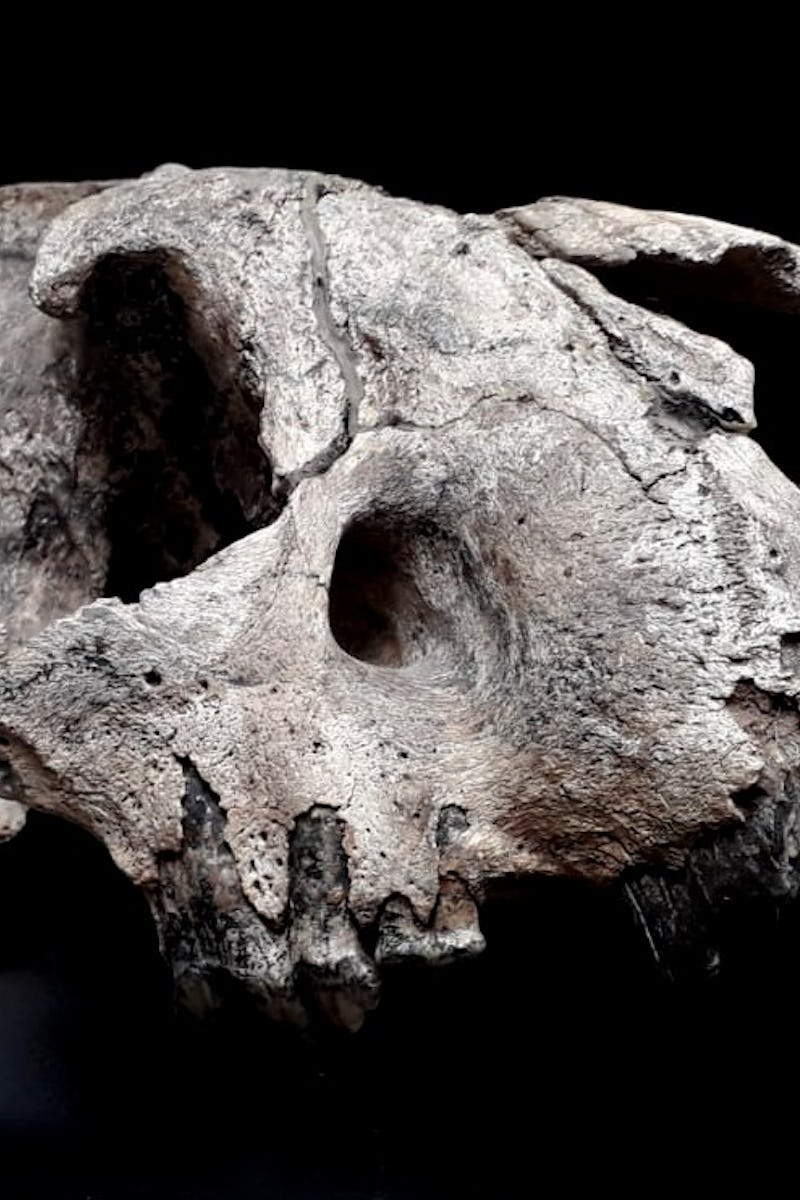
Saber-tooth tigers: New photos of unearthed skulls match science with surprise
This big cat was the size of a bear.
by Sofia QuagliaAs recently as 12,000 years ago, ancient humans shared the Earth with a monster unlike anything we know today — and it was even bigger and more terrifying than we first thought.
The saber-tooth tiger Smilodon populator already had a rep as the largest of all the saber-tooth tigers. But according to the latest archaeological findings from Uruguay, we have been underestimating it nonetheless.
In a study published this month in the journal Alcheringa, researchers detail how a gigantic Smilodon skull, found among sediments of the Dolores Formation in the west and south of Uruguay, completely changes paleontologists’ understanding of this ferocious feline.
“Average Smilodon populator skulls are around 35 cm long, with the length measured from premaxillary to condyle,” Aldo Manzuetti, a graduate student at Uruguay's University of the Republic and an author on the study, tells Inverse.
“This material is almost 38 cm in the same measurement, almost 40 cm in total skull length.”
Based on measurements of the long bones in the new skull, Manzuetti and his team were able to estimate just how big the cat truly was: Up to 436 kg. That is the weight of a grand piano.
"If humans were around at the same time as these giant cats, as they were elsewhere, then good luck to them," Mirjana Roksandic, a prehistoric anthropologist from the University of Winnipeg tells Inverse.
Saber-tooth tigers like Smilodon were voracious predators, hunting giant sloths and other herbivores across North and South America between 1 million and 10,000 years ago.
And while there were several other genus of saber-tooth, Smilodon populator was like no other cat before it.
It was "a very robust and muscular felid, with massive forelimbs, and short tail,” Aldo Manzuetti, a doctoral student in paleontology at Uruguay's University of the Republic, tells Inverse.
“It stands out thanks to its long-saber canines."
BIG cats
The new weight estimate is far above anything researchers have found before — suggesting these animals were far more giant, and more powerful, than we could have imagined.
“Smilodon populator body mass estimate was around 220-360 kilograms, with some individuals being around 400 kilograms,” Manzuetti says.
“This material is 407 kg average and 436 kg maximum," he says. "It’s a bear-size Smilodon.”
In fact, according to these findings, the only animal that would have been larger living at the time were short-faced bears, Arctotherium Burmeister (estimated at some 1,000 kg on average).
This massive skull doesn't just change our image of Smilodon populator; it also changes what we know about its capabilities and diet.
The tiger's gigantic jaws mean it could likely handle prey weighing up to 3 tons. Previously, researchers had thought the big cat would only manage a comparably puny 1-ton meal.
Rather, it would have been the "apex predator" of its time, Manzuetti says, having a profound effect on the other fauna that roamed the Americas along side it.
Now, the researchers want to find more bones to build out their picture of this hulk of an animal.
“Was this the only specimen of an extremely large size? Was it forming part of a whole population of huge Smilodon populators?” Manzuetti asks.
“These questions are difficult to explain with only this material, thus it could be that we may not understand the overall ecological impact of this large-bodied predator on the faunas of the past.”
Abstract: Among the three recognized species of Smilodon, S. populator is the largest in size and has the widest distribution across South America. The present contribution describes an almost complete skull assigned to the aforementioned felid. The material was recovered from sediments of the Dolores Formation (Lujanian Stage/Age) from the southern part of Uruguay. This specimen is remarkable for its unusual craniodental measurements, indicating that it is one of the largest known specimens of the genus. Estimates of body mass indicate that this individual weighed over 400 kg. In addition, maximum prey size estimation greatly surpasses 1 t and approach nearly 3 t. Based on this, aspects of the paleobiology and paleoecology of S. populator are discussed. Undoubtedly, this kind of carnivorous mammal was at the top of the food chain, with clear adaptations for feeding upon the largest available herbivores, which potentially includes several megafaunal mammal species found in South America during the late Pleistocene.